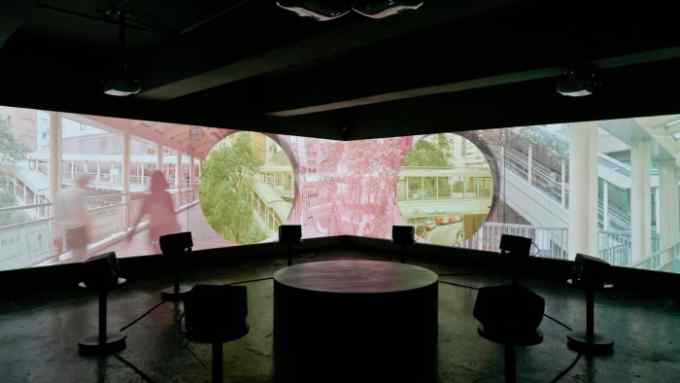Frieze Seoul director Patrick Lee on why the fair is a ‘platform for Asia’

Roula Khalaf, Editor of the FT, selects her favourite stories in this weekly newsletter.
Frieze Seoul, which returns for its second edition on September 6, is settling in — and fanning out. Galleries gave “a lot of feedback . . . and we fixed a lot . . . logistics, storage, shipping, that sort of thing,” says director Patrick Lee, and while “last year we were light on programming, we really just wanted to get the fair up . . . This year we’ve launched a lot of different programmes, from the first Frieze Seoul Artist Award to a talks programme . . . It’s definitely a progression.”
For the first time, he adds, Frieze Seoul will also be the anchor event for the South Korean government’s Seoul Art Week, a weeklong celebration of arts and culture. Complementing the fair’s busy calendar of “citywide activations” will be art nights in the districts of Hannam, Gangnam and Samcheong, for example, while the October edition of the twice-yearly Seoul Fashion Week has been brought forward. “Last year, the mayor’s office and many institutions didn’t really know what Frieze is . . . but when they saw the numbers of foreign visitors and how it activated the city, they became very enthusiastic about collaborating,” says Lee. “They think they can leverage this week to reach a bigger audience and show off the city.”


His focus, meanwhile, remains enticing buyers. As well as hailing the “generational shift” in South Korea — the emergence of MZers (millennials and Gen-Z) and scions with collecting experience and purchasing power — he is bullish about China. “Mainland China had zero presence last year because of lockdowns but, based on our initial outreach, it looks like we’re going to have a strong contingent,” he says, speaking while visiting partners in Jakarta. Asked about the global art market backdrop — softening prices and sentiment, particularly in the ultra-contemporary sector — Lee appears unfazed. “As a former gallerist, I know these things are cyclical,” he says, “and I believe galleries are also here for the long term.”
Held at COEX in Seoul’s Gangnam district, and running concurrently with the long-established Kiaf Seoul art fair, Frieze Seoul will again feature more than 120 galleries, but have an even stronger Asian presence. Last year, Frieze aimed for 25 per cent Asia-based galleries and “ended up being over 30 per cent, which I was very happy about”, says Lee. “This year, if you include western galleries that have a space in Asia, we’re almost at 50 per cent.” Shanghai’s Antenna Space, Tokyo’s SCAI The Bathhouse and Ho Chi Minh City’s Galerie Quynh are among the new arrivals.

The mandate, as he puts it, is to create a “platform for Asia”, but one where it’s “not just western galleries coming here to meet an Asian audience”. Another tangible step towards that goal is the return of Focus Asia: a curated section showcasing 10 solo artist presentations by regional galleries, including Seoul’s Cylinder. A large-scale installation by Frieze Seoul Artist Award winner Woo Hannah — draped fabrics reminiscent of hanging curtains, or a bat spreading its wings — will be also suspended from the ceiling of the fair.
“I want Frieze Seoul to be a platform that goes both ways and puts Asia in dialogue with a broader audience,” says Lee.
September 6-9, frieze.com

Comments